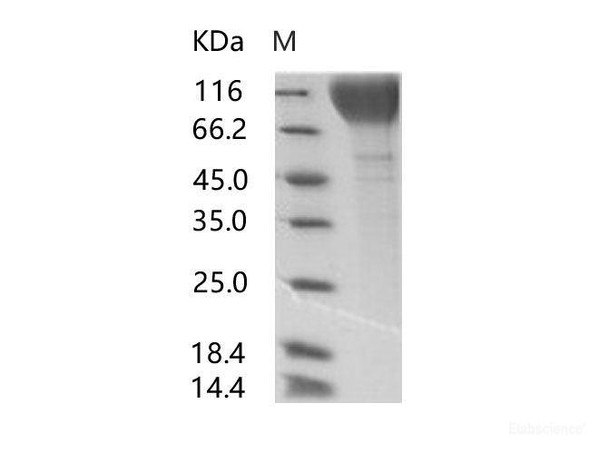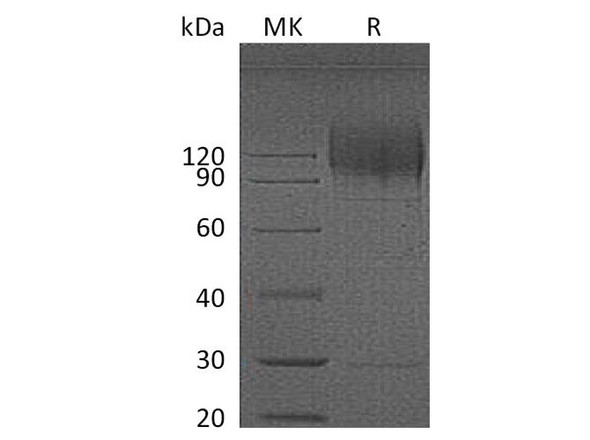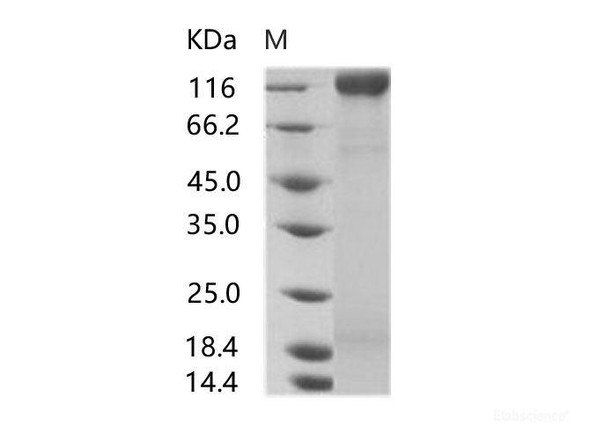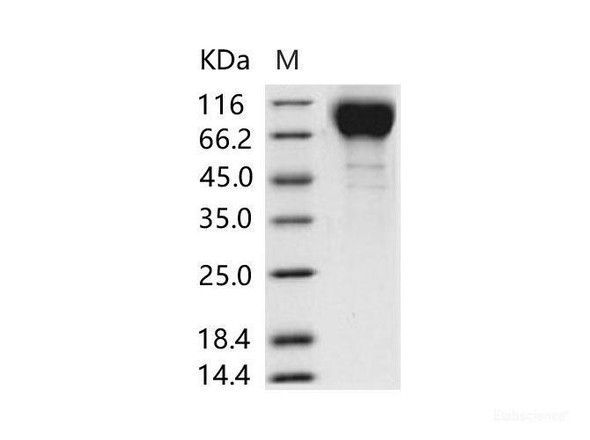| Sequence: | Tyr38-Arg527 |
| Accession: | ACY40659.1 |
| Storage: | Generally, lyophilized proteins are stable for up to 12 months when stored at -20 to -80°C. Reconstituted protein solution can be stored at 4-8°C for 2-7 days. Aliquots of reconstituted samples are stable at < -20°C for 3 months. |
| Shipping: | This product is provided as lyophilized powder which is shipped with ice packs. |
| Formulation: | Lyophilized from sterile PBS, pH 7.4 Normally 5 % - 8 % trehalose, mannitol and 0.01% Tween80 are added as protectants before lyophilization. Please refer to the specific buffer information in the printed manual. |
| Reconstitution: | Please refer to the printed manual for detailed information. |
| Background: | The HIV-1 gp120 envelope protein, a glycoprotein that is part of the outer layer of the virus, which is an essential component in the multi-tiered viral entry process. It presents itself as viral membrane spikes consisting of 3 molecules of gp120 linked together and anchored to the membrane by gp41 protein. Gp120 is essential for viral infection as it facilitates HIV entry into the host cell and this is its best-known and most researched role in HIV infection. However, it is becoming increasingly evident that gp12 might also be facilitating viral persistence and continuing HIV infection by influencing the T cell immune response to the virus. The surface protein gp120 attaches the virus to the host lymphoid cell by binding to the primary receptor CD4. Gp120 binding to its receptor CD4 and co-receptor, CXCR4 or CCR5 is required for fusion of viral and cellular membranes. Several mechanisms might be involved in this process of which gp120 binding to the CD4 receptor of T cells is the best known and most important interaction as it facilitates viral entry into the CD4+ cells and their depletion, a hallmark of the HIV infection. Despite the overall genetic heterogeneity of the gp120 glycoprotein, the conserved CD4 binding site provides an attractive antiviral target. Interaction between gp120 and ITGA4/ITGB7 would allow the virus to enter GALT early in the infection, infecting and killing most of GALT's resting CD4+ T-cells. This T-cell depletion is believed to be the major insult to the host immune system leading to AIDS. |






